Plasterboard is highly versatile, sustainable and cost-effective as well as quick and easy to install. And if that wasn’t enough, it’s also resistant to fire, moisture and mould.
So, it should come as no surprise that plasterboard popularity has skyrocketed in recent years among professionals and DIYers alike.
But with so many options available on the market, it’s deceptively easy to get lost going down the rabbit hole until you’re left wondering:
How do I choose plasterboard?
At Roofing Superstore, we delved deep into the ins and outs of plasterboard and put together a comprehensive guide that explores the different types of plasterboard and their applications, plasterboard thicknesses and much, much more to help you make an informed purchasing decision.
Without further ado, let’s crack on.
Table of contents:
- What is plasterboard?
- What are the different types of plasterboard?
- Size of plasterboard sheets
- What thickness of plasterboard should I use?
- How to cut plasterboard
- How to fix plasterboard
- Final thoughts
What is plasterboard?
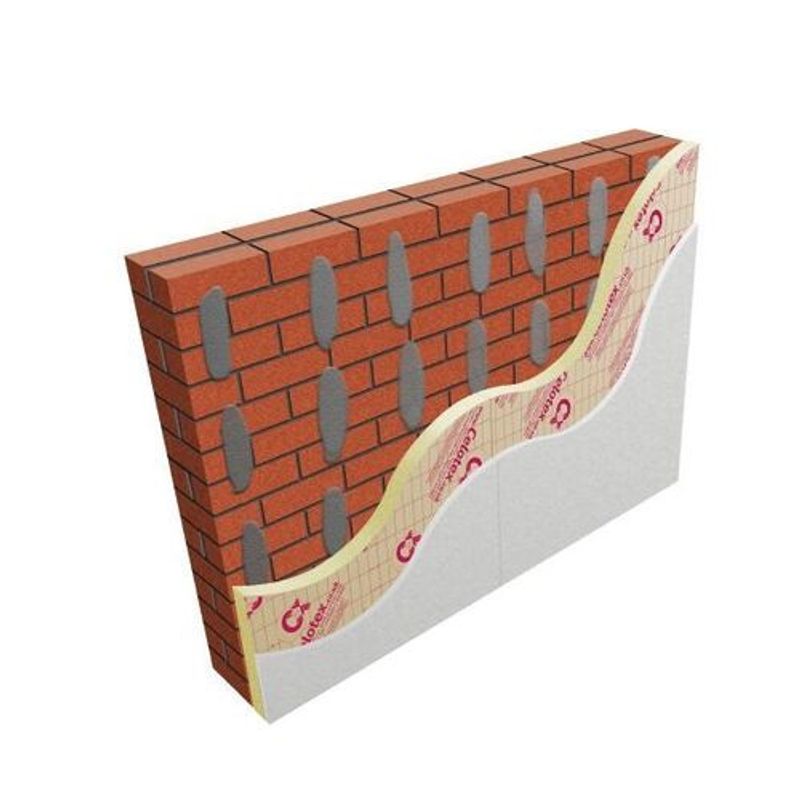
First things first:
Let’s make sure we’re all talking about the same thing.
Plasterboard is a gypsum panel fitted between two layers of heavy-duty, thick construction paper. It’s most commonly found on walls and ceilings.
Plasterboard is an effective alternative to old-school lash and plaster and can be used to cover existing walls or create wholly new ones when it’s affixed to studs and frames.
Now:
We’ve already mentioned the many benefits of plasterboard in passing.
So, it should come as no surprise that builders use plasterboard to meet Building Regulations for fire protection, thermal efficiency and acoustic insulation, among other things.
You may have come across the terms drywall, dry lining, gypsum board, wallboard or wall panels – and yes, they’re all the same thing as plasterboard.
The early development of plasterboard was pioneered by British Gypsum, a company which launched all the way back in 1915 and is still going strong.
Now that we’re fully aware of what plasterboard is, let’s take a closer look at the different plasterboard types and their primary applications.
What are the different types of plasterboard?
There are several different types of plasterboard available on the market, which is in part what makes it such a versatile solution suitable for use in a wide range of applications.
The type you’re going to use will ultimately depend on where you intend to fit it and for what purpose. Here are the most common choices.
Fire-resistant plasterboard
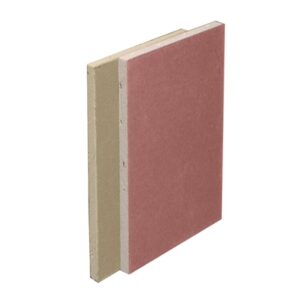
Fire-resistant plasterboard, also known as fireproof plasterboard, fulfils the same function as a fire door by providing protection from fire and slowing down its spread across a property. To do so, it contains glass fibre and other additives.
While it cannot contain fire indefinitely, fire-resistant plasterboard can resist it for up to 240 minutes, depending on the model, which allows the occupants plenty of time to leave the building safely. Fire-resistant plasterboard typically has a pink face and can be fitted pretty much anywhere; however, it’s best suited for rooms where fires are most likely to break out, such as kitchens and living rooms with fireplaces.
When choosing fire-resistant plasterboard, make sure you carefully check the product specifications in order to get the right option for your particular requirements, including specific Building Regulations.
Moisture-resistant plasterboard
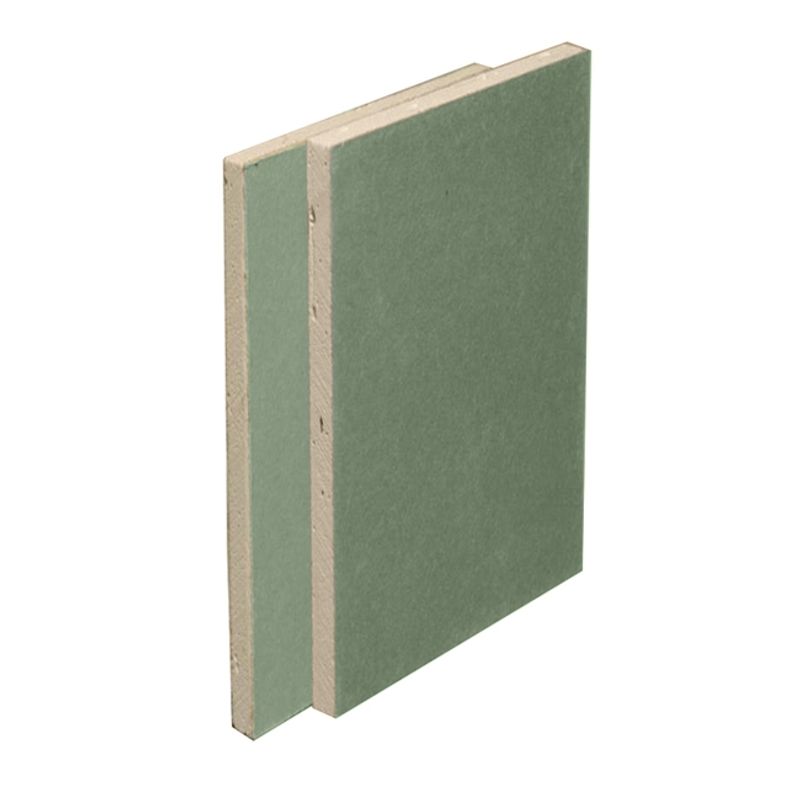
Moisture-resistant plasterboard, also known as waterproof plasterboard, usually has a green face, which makes it instantly recognisable. It has moisture-resistant additives in its core which prevent water absorption. This makes it ideally suited for use in bathrooms, cloakrooms, wet rooms and kitchens.
Manufacturers recommended not to plaster over moisture-resistant plasterboard because wet plaster is likely to soak up moisture.
Acoustic plasterboard
Acoustic plasterboard, also known as sound reduction plasterboard, is perfect when you need to reduce the amount of noise that comes into a room and goes out of it. Equipped with a high-density core, this type is particularly effective for use in thin walls and ceilings which are commonly found in most flats.
What’s more:
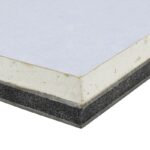
It can also provide a more comfortable environment and greater privacy in bedrooms, studies and living rooms, making them free from unpleasant noisy disruptions. For best results, you should use acoustic plasterboard alongside other acoustic insulation solutions.
Insulated plasterboard
As the name suggests, this type of plasterboard provides thermal insulation to internal walls, preventing hot air from leaving the room and cold air from coming in. Insulated plasterboard is a highly convenient, cost-effective way of insulating your walls and ceilings, and it’s suitable for use in your home, garage, conservatory and garden shed. If you want to use your outbuildings during the colder months, insulated plasterboard is the way to go.
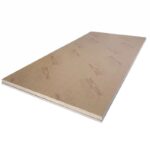
This type of board is quick and easy to install, making it extremely popular with DIYers.
Square edge plasterboard
Square edge plasterboard is perfect if you intend to paint or wallpaper a room at the end of your project. It allows you to plaster the surface after fitting and helps create a smooth finish.
Tapered edge plasterboard
Tapered edge plasterboard is ideal if you wish to dry-line the surface after installation. Thanks to the fact that its edges are thinner than the central section, you can apply scrim and joint fillers where the edges meet without damaging the surface.
Size of plasterboard sheets
Plasterboard comes in a wide variety of sizes, so you’re guaranteed to find the right size for your specific project. The most common width of plasterboard is 2.4 metres, making the 2.4m x 1.2m option the closest you’ll find to a standard-size plasterboard.
That being said:
Plasterboard is readily available with widths in the 0.9-1.2 metre range and lengths in the 1.8-3.6 metre range for greater convenience. To find out more, check out our guide on Plasterboard sizes.
You’re probably wondering:
How about plasterboard thickness? Just how thick is plasterboard?
That’s exactly what we’re going to find out next.
What thickness of plasterboard should I use?
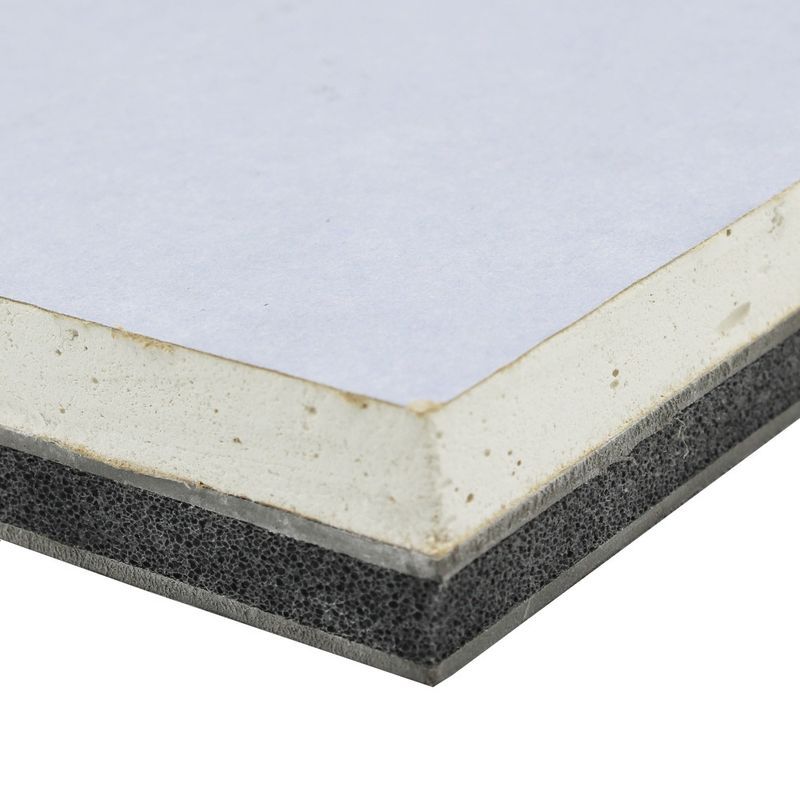
Choosing the correct thickness is absolutely crucial in order to get optimum results from your plasterboard, regardless of type.
Now:
As with lengths and widths, plasterboard thicknesses vary quite a bit, from as little as 9mm to as much as 102mm. Still, the most common thickness for walls is 12.5mm, with the typical thickness of plasterboard for ceilings being 9.5mm. The main reason for this difference is that walls generally require greater acoustic and thermal insulation than ceilings.
Having said that, let’s take a close look at the thickness range for the different types of insulation:
Acoustic-resistant plasterboard options are generally available in the 12.5mm to 15mm range.
Fireproof plasterboard solutions tend to come in the 12.5mm to 19mm range.
When it comes to insulated plasterboard, your choice is much greater, with multiple options across the 22mm to 102mm range. You can find out exactly what they are in our dedicated guide.
What thickness plasterboard is best?
Unless otherwise specified by Building Regulations (for instance, if you live in a historic property where extra thin plasterboard might be necessary), going with the standard options (12.5mm for walls and 9.5mm for ceilings) is a pretty safe bet. When in doubt, always consult a professional.
How to cut plasterboard
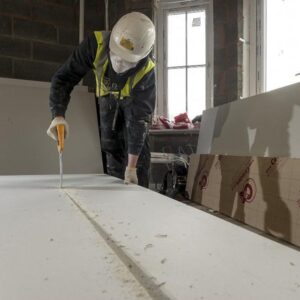
Plasterboard often comes in large sheets which need to be cut down to size to suit your particular project.
The good news is:
Cutting plasterboard is really straightforward! All you’re going to need is a plasterboard knife, (basically, a Stanley knife or similar), tape measure, pencil and spirit level.
The process is as follows:
First, mark the location you intend to cut.
Second, use your knife to score a 3mm-deep line on the face side of the plasterboard.
Third, lift the board and bend it back along the line until it snaps.
Fourth, cut the back face of the board.
Simple as that!
How to cut a hole in plasterboard
In addition to having your plasterboard cut to size, you’ll likely have to cut holes into it to accommodate sockets, light fittings and so on.
Now:
The best way to cut plasterboard in this manner is with a stab saw or pad saw. When cutting a square hole, the first thing you need to do is measure the necessary dimensions and mark them with a pencil.
When using a pad saw, the next thing you have to do is drill starter holes and then carefully cut along the marks. But if you happen to have a stab saw, you won’t even need a drill – simply push the saw blade all the way through one of the measured lines and proceed as usual.
Finally, tidy up any rough edges with a plasterboard file for a smooth finish.
How about cutting round holes in plasterboard?
Here, the circle cutter is your best friend. Adjust it to the desired diameter – 68mm is standard in the UK, but most circle cutters can operate in the 40-270mm range – before cutting with a pad saw at slow speed. You could use a power saw, but that’s likely to create plenty of dust which you’ll have to clean afterwards.
Now that you’ve cut your plasterboard to size and made any necessary holes, it’s time to fix it!
We’ll show you go to go about it next.
How to fix plasterboard
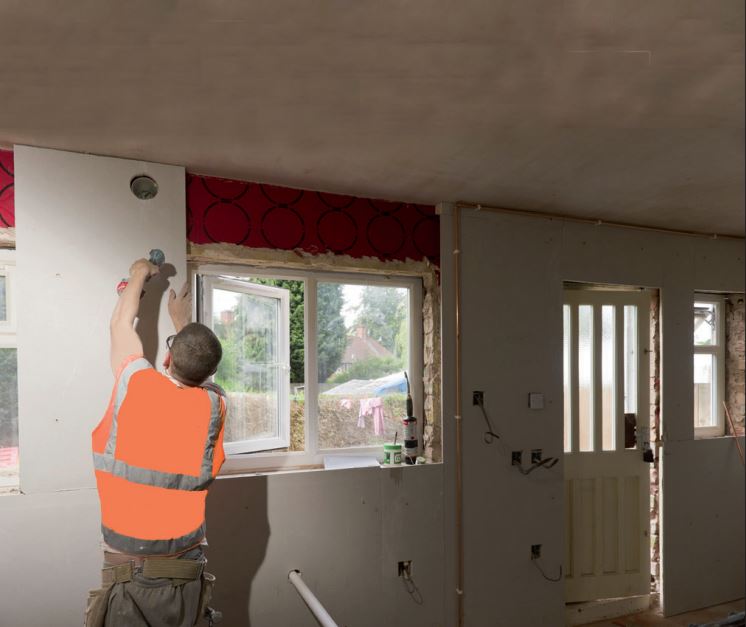
When fixing plasterboard, you’ve got not one, not two, but three methods!
Let’s take a closer look at each one.
How to fix plasterboard with nails
Fixing plasterboard with nails has historically been the most popular method, and it remains a perfectly valid option.
Having said that:
We wouldn’t recommend it if you’re fixing plasterboard to your ceiling. That’s because holding the plasterboard in the right position and hammering in nails upside down can be rather challenging, to say the least.
When working with a stud wall, on the other hand, the process is as straightforward as it gets. All you have to do is position the plasterboard over the timber, mark a location in the centre of the timber which is approximately 10-12mm from any edge, and hammer in your galvanised nail. Do the same for the remaining nails, leaving a gap of around 200mm between each one.
Remember – only use galvanised nails when working with plasterboard, as these won’t rust.
How to fix plasterboard with screws
Screwing into plasterboard is probably the easiest method of all.
Once again, place the plasterboard in the correct position, place the screw in the centre around 10mm from the edges, and carefully drill it in. Ideally, the head should be around 2mm below the surface. Repeat this with the remaining screws, leaving around 200mm between each one.
Roofing Superstore top tip: Whether you’re going with nails or screws, it’s best to have someone assist you by holding the plasterboard firmly into place. This way, it won’t get out of place.
How to fix plasterboard with adhesive
The use of adhesive is typically reserved for plasterboarding a brick wall with the help of the so-called dot and dab method.
Here are the steps you should follow:
First, mix plasterboard adhesive according to the manufacturer’s instructions. As a rule of thumb, you want a creamy substance that’s neither too thin nor too thick.
Second, apply thick dabs of adhesive in dots across the back of the plasterboard every 200mm or so.
Third, carefully press the plasterboard to the masonry. You’ll have to keep pushing for a small amount of time – how long exactly tends to differ from product to product, so make sure you’ve checked the manufacturer’s instructions carefully.
Roofing Superstore pro tip: Take your time and use a spirit level when you line up the first board to ensure it’s straight. This is crucial, as the remaining boards will line up with it. So, if the first one is crooked, the entire installation will be out of place.
And on that note…
Final thoughts
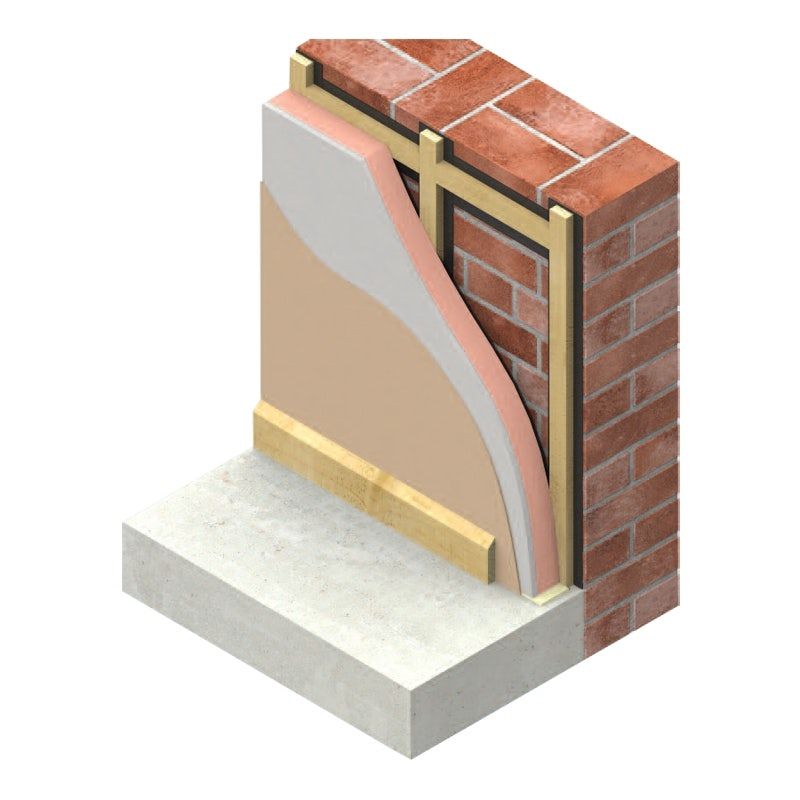
Gypsum plasterboards are a multi-functional, high-performance solution ideal for use in a wide range of applications in both domestic and commercial settings.
What’s more:
Whether you’re looking for thermal insulation, sound reduction, fire & water resistance or a particular finish, there’s a plasterboard solution that’s right for you.
And now that you know your way around the various types of plasterboard and plasterboard thicknesses, you should have no trouble choosing the perfect product for your next DIY project.

















